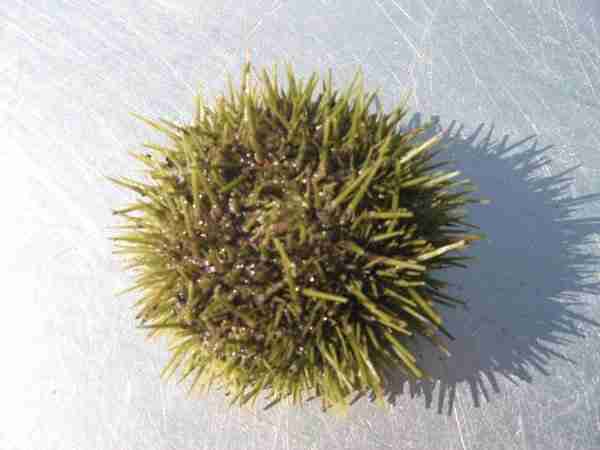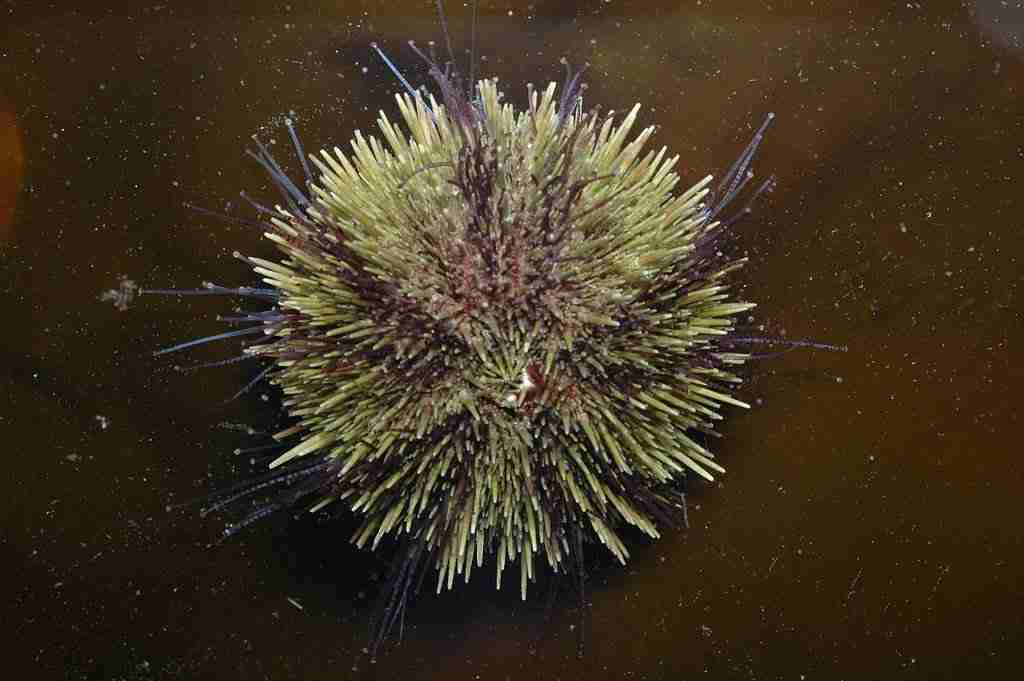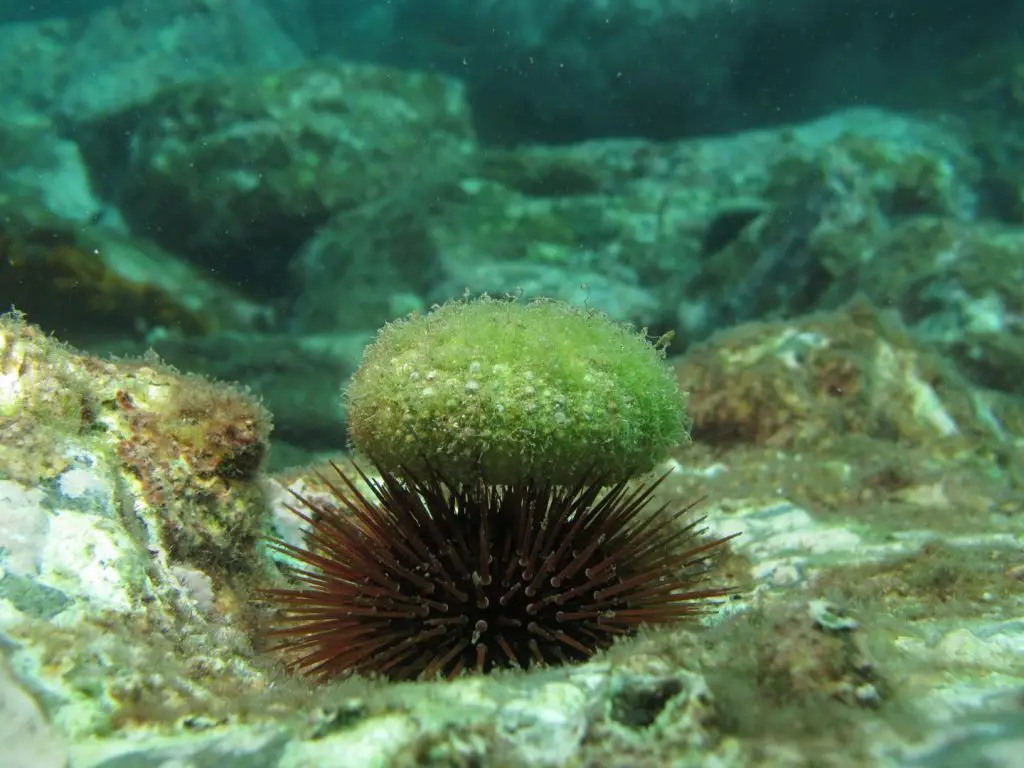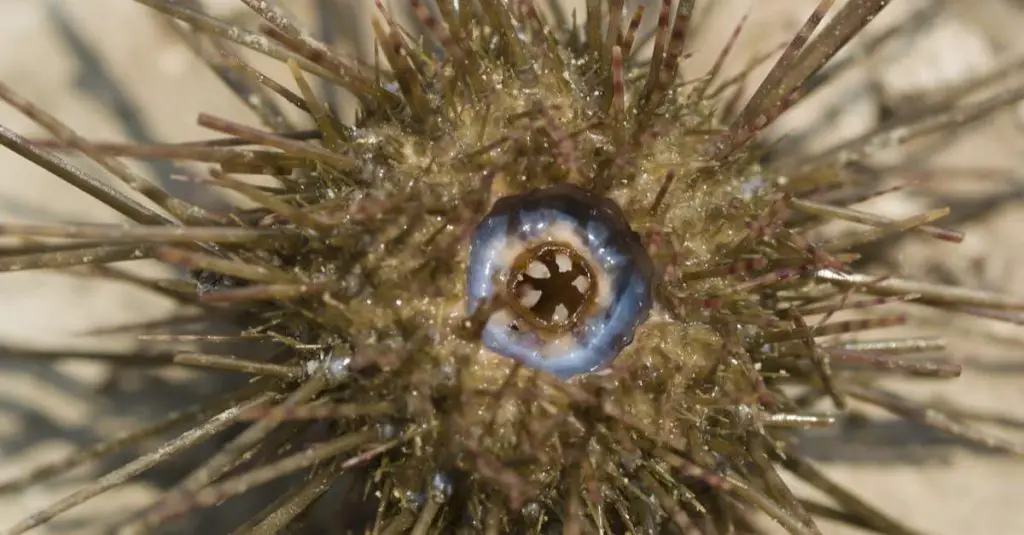As an Amazon Associate I earn from qualifying purchases.
Do you know what green sea urchins eat? If not, you’re in for a surprise! These creatures are interesting and unique, and they have a diet that is different from most other marine animals. In this blog post, we will discuss what do sea urchins eat and why it matters. We will also explore some of the benefits of keeping green sea urchins in your aquarium.
Green sea urchins are covered in short, sharp, movable spines that are shorter than red urchins and more delicate than purple urchins. This species can be pale green or greenish tinged with purple or brown on their spines. They move using their spines and hundreds of miniature tube ‘feet’ located under their body, which has tiny suction cups to grip surfaces. Their circular mouth, also located on its underside, has five teeth.
As they crawl along the ocean floor, they scrape fine algae off of hard substrate with their teeth, and also feed on kelp and other seaweed. On the Pacific coast, green sea urchin shells (called tests) can grow to a diameter of about 100 millimeters, although the average size is 50 to 60 millimeters. Aging techniques for B.C. green urchins are currently being developed by the Pacific Biological Station, but green urchins on the Atlantic Coast have been known to live to 20 to 25 years of age. So if you’re curious about these little guys, keep reading!

What do green sea urchins eat?
Green sea urchins are omnivorous, meaning that they will eat both plant and animal matter. They are known to graze on algae, but they will also consume small invertebrates. Their diet is largely determined by what is available in their environment. In the wild, green urchins are often found near coral reefs where there is an abundance of food.
One of the most interesting things about green urchins is that they have the ability to change their diet based on what is available. For example, if there is a lot of algae in their environment, they will consume more algae. If there are not many invertebrates available, they will eat more plant matter. This ability to change their diet is what makes them such good candidates for aquariums.
Why does their diet matter?
The diet of green sea urchins is important for a few reasons. First, it helps to keep the water clean. Green urchins consume algae and help to control the growth of algae in the aquarium. This is important because algae can quickly take over an aquarium and make it difficult to keep the water clean.

Second, green urchins are a good source of food for other animals in the aquarium. Many fish and invertebrates will eat urchins, so they can help to provide a balanced diet for your tank mates. Third, green urchins are interesting to watch.
They have unique feeding behaviors that are fun to observe. If you are looking for an active and interesting pet, a green sea urchin may be a good choice for you.
What is the difference between the green urchins’ diets in the Atlantic and Pacific oceans?
There are two main types of green urchins: those from the Atlantic Ocean and those from the Pacific Ocean. The diet of each type is slightly different. Atlantic urchins are more likely to eat invertebrates, while Pacific urchins consume a greater variety of algae. The diet of a green sea urchin can also vary depending on the time of year.

What do green urchins eat in winter?
Green sea urchins are known to consume more algae in the summer months and more invertebrates in the winter months. This is likely due to the availability of food in their environment.
What do green urchins eat in spring?
Green urchins consume a variety of foods in spring, including algae, invertebrates, and even small fish.
What do green urchins eat in summer?
In the summer months, green urchins are known to consume more algae. This is likely due to the abundance of algae in their environment during this time of year. As you can see, the diet of green sea urchins is quite varied.

What do green urchins eat in autumn?
Green urchins are known to consume a variety of foods in autumn, including algae, invertebrates, and even small fish. This is likely due to the abundance of food in their environment during this time of year.
How much can a green urchin eat in a day?
A green urchin can consume up to 15% of its body weight in a single day. This is equivalent to a human eating about 20 pounds of food in one day!
What happens if a green urchin overeats?
If a green urchin overeats, it can become sick or even die. This is why it is important to provide a varied diet and not overfeed them.
What happens if a green urchin stops eating?
If a green urchin stops eating, it can become sick or even die. This is why it is important to provide a varied diet and make sure they are getting enough food.

What do green urchins eat in captivity?
Sea urchins mostly feed on algae, which makes them great additions to any aquarium or tank. Being algae-eaters, they help to keep the tank naturally clean and prevent the build-up of too many algae, which may prove harmful to the other inhabitants. They also eat pieces of marine plants, plankton, and kelp.
Sea urchins are constantly eating, and are pretty sure to clear your tank of any algae growing in no time. This can make them susceptible to eating beautiful decorative corals and live rock, as they look for algae to scrape off.
If there is not enough algae matter available in your tank, you can provide your sea urchin with pieces of seaweed, kelp, and algae wafers. They are omnivores and can be fed mussels and other bits of meat and seafood, such as invertebrates or cut-up shrimp, as well as fish flakes and pellet food.
Do green sea urchins eat kelp?
Sea urchins eat kelp, barnacles, seaweed, feather star, and other crinoids.

Are there any carnivore green sea urchins?
Though most green urchins are inherently herbivorous or omnivorous in nature, there does exist an order of green urchins called Cidaroida, which consists of active predators. These primitive sea urchins move across the ocean floor using their tube feet and pursue slower-moving sea creatures like tiny starfish, feather stars, and sea cucumbers, engulfing them in their spines.
They use their feet and spiny spikes to latch onto their prey. As these feet are present all over the body, the entire body is considered as the oral surface of the sea urchin except for the upper part which contains the anus. The sharp spines of sea urchins are very useful, as they act as a defense against predators and also help them to move across the ocean floor and sense other creatures and obstacles in their vicinity.
Some sea urchin species hold their eggs among their spines rather than letting them float free, which helps protect them from fish and other predators that may consume them. They are fertilized by sperm released in the water and develop into embryos which then float off into the ocean.

Do green sea urchins eat seaweed?
Yes, green sea urchins eat seaweed. In fact, they are one of the primary predators of seaweed in the ocean! While this may seem like a bad thing, it is actually essential for maintaining the health of coral reefs. Seaweeds can grow very quickly and smother coral reefs if they are not kept in check. By eating seaweed, sea urchins help to keep coral reefs healthy and thriving.
Conclusion
As you can see, green sea urchins have a varied diet, but what they eat is essential for their survival. Without a balanced diet, these creatures would not be able to live healthy lives. Therefore, it is important to make sure that they are getting the proper nutrition that they need in order to survive. Thanks for reading.
You may also read:
Amazon and the Amazon logo are trademarks of Amazon.com, Inc, or its affiliates.

